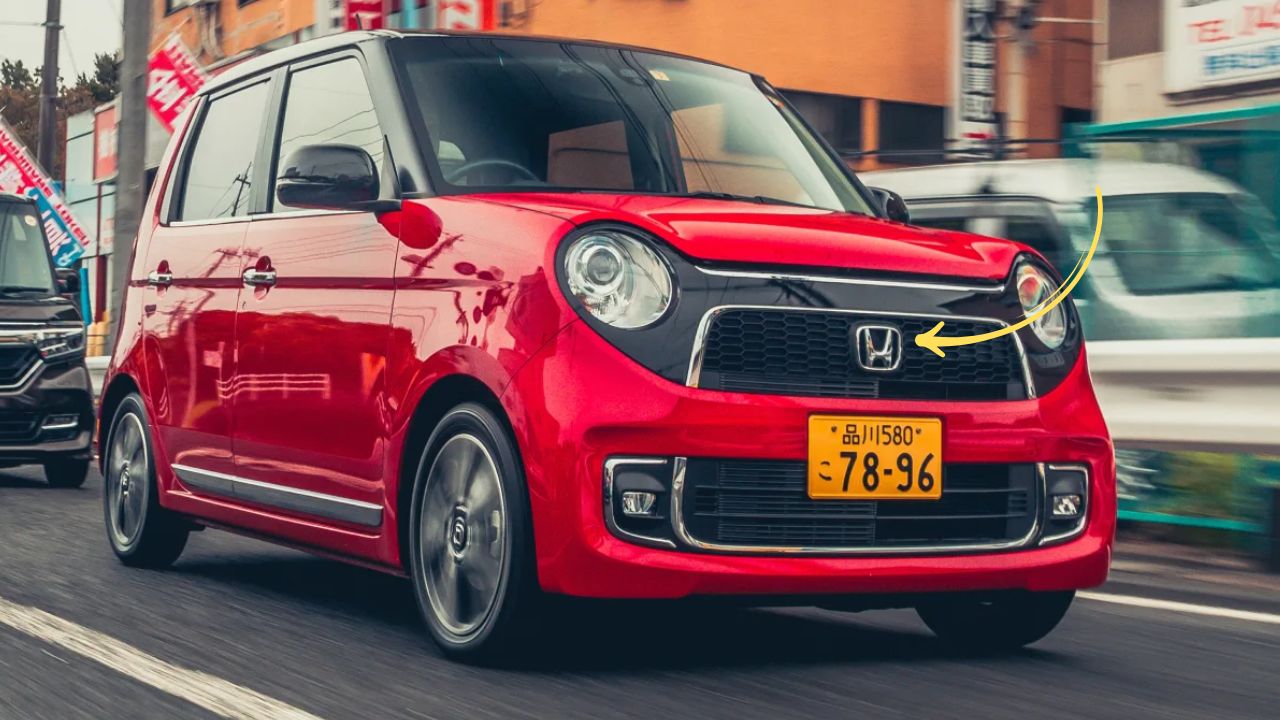Honda just dropped some seriously cute photos of their latest electric vehicle, and honestly, it’s making us a bit jealous here in Australia. The N-One e is Honda’s newest addition to their Japanese kei car lineup, and it’s packed with more personality than most cars twice its size.
What Makes the Honda N-One e Special?
Think of the N-One e as the electric equivalent of a friendly neighborhood companion. Honda’s marketing team isn’t holding back on the cuteness factor either – they’re literally calling it so adorable that you’ll want to treat it like a partner and chat with it daily. While that might sound over the top, one look at this pint-sized EV and you’ll understand why they’re going all-in on the charm offensive.
The N-One e delivers around 270 kilometers of driving range on the WLTC testing cycle, which is pretty impressive for something that’ll likely measure under 3.4 meters long. That’s enough juice for most people’s daily commuting needs, plus weekend adventures around town.
But here’s where it gets really interesting – this little electric car can actually power your house. The vehicle-to-home (V2H) and vehicle-to-load (V2L) functionality means your N-One e could keep your lights on during a power outage or charge your devices when you’re out camping.
Design That’ll Make You Smile
Exterior Charm
Honda has nailed the “approachable cute” aesthetic with the N-One e. Following the traditional kei car formula, it sports a boxy shape that maximizes interior space while keeping the overall footprint tiny. The front end features what Honda describes as a face that’ll make you feel emotionally attached to your car.
The design team has also thrown in some environmental consciousness. That front grille? It’s made from recycled bumpers. Even the carpeting and insulation come from repurposed materials like old PET bottles and employee work clothes. It’s sustainability with a story, which adds another layer of appeal for environmentally conscious drivers.
Interior Practicality
Step inside, and you’ll find Honda has worked some serious space-maximizing magic. The rear seats split 50:50 and fold completely flat, instantly transforming your commuter car into a mini cargo hauler. Need to move between the front seats? No problem – there’s no bulky center console to navigate around.
The dashboard features a clever recessed shelf that runs its full width, with USB ports positioned right above it. It’s the perfect spot to plop your phone while keeping charging cables tidy. The infotainment system gets a free-standing touchscreen, but Honda hasn’t gone completely digital crazy – there are still plenty of physical buttons and knobs for things like climate control.
How Does It Stack Up Against the Competition?
Power and Performance
While Honda hasn’t released official power figures yet, Japanese kei car regulations limit the N-One e to under 47kW from its single electric motor. For context, that’s similar to Honda’s N-Van e commercial vehicle, which produces exactly 47kW and 162Nm of torque.
Don’t expect sports car acceleration, but for city driving and short highway stretches, it should be perfectly adequate. The one-pedal driving mode will make stop-and-go traffic much more relaxing too.
Charging Capabilities
Based on its N-Van e sibling, expect DC fast charging around 50kW and AC charging up to 6kW. That’s not Tesla Supercharger fast, but it’s reasonable for a vehicle this size and price point.
The Australian Reality Check
Why We Probably Won’t See It Here
Here’s the frustrating part for Australian Honda fans – the N-One e almost certainly won’t make it to our shores. The closest comparison we have is Mitsubishi’s experience with their eK X electric kei car. Despite meeting Japanese safety standards, Mitsubishi found it would be “uneconomic” to modify the vehicle to meet Australian Design Rules.
This regulatory hurdle has kept many excellent small EVs out of the Australian market, which is particularly disappointing given our urban centers’ perfect suitability for compact electric vehicles.
What We Get Instead
The closest thing to the N-One e available in Australia is the Hyundai Inster, which starts around $39,000 before on-road costs. While the Inster is larger and more powerful (up to 84kW and 360km range), it’s also significantly more expensive than what the N-One e will likely cost in Japan.
Honda’s Global EV Strategy vs Australian Market
The Worldwide Picture
Honda’s electric vehicle strategy varies dramatically by region. In China, they’re rapidly expanding their EV lineup. Japan gets the N-One e and N-Van e. Europe has access to certain Honda EVs, and North America gets the Prologue (which actually uses a General Motors platform). There’s even the joint venture with Sony producing vehicles under the Afeela brand.
Australia’s EV Desert
Despite this global electric expansion, Honda Australia remains stubbornly EV-free. The local arm has promised their first electric vehicle will arrive before 2028, but that’s still years away. Given the rapid pace of EV development, waiting until nearly 2030 seems almost quaint.
This delay is particularly puzzling given Australia’s high urbanization rate and the obvious appeal of affordable, efficient city cars like the N-One e.
The Bottom Line
What This Means for Car Buyers
The Honda N-One e represents everything appealing about small electric vehicles – efficiency, affordability, practicality, and genuine character. Its 270km range hits the sweet spot for urban driving, while features like home power supply add real utility value.
For Australian buyers tired of choosing between expensive European EVs and larger SUV-style electrics, the N-One e would fill a genuine market gap. Unfortunately, regulatory complexities and Honda’s conservative Australian strategy mean we’ll be admiring this adorable EV from afar.
Looking Forward
The N-One e launch highlights how different markets are moving at vastly different speeds in the electric transition. While Japan embraces practical, affordable EVs that suit their specific needs, Australia continues waiting for manufacturers to figure out our market.
Perhaps the N-One e’s appeal will eventually pressure Honda Australia to reconsider their timeline. Until then, we can only hope that Honda’s promised pre-2028 EV will capture some of the N-One e’s charm and practicality.
